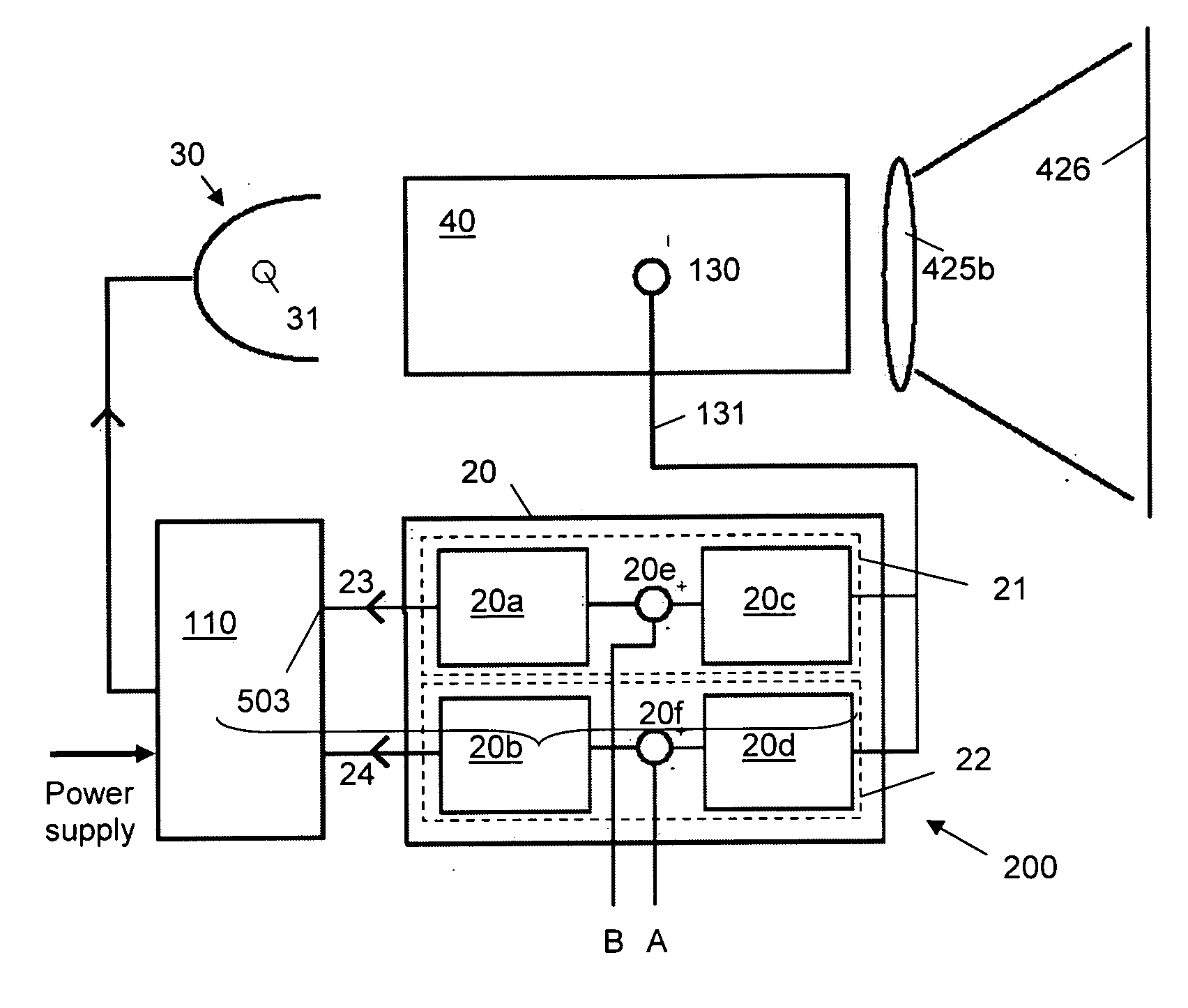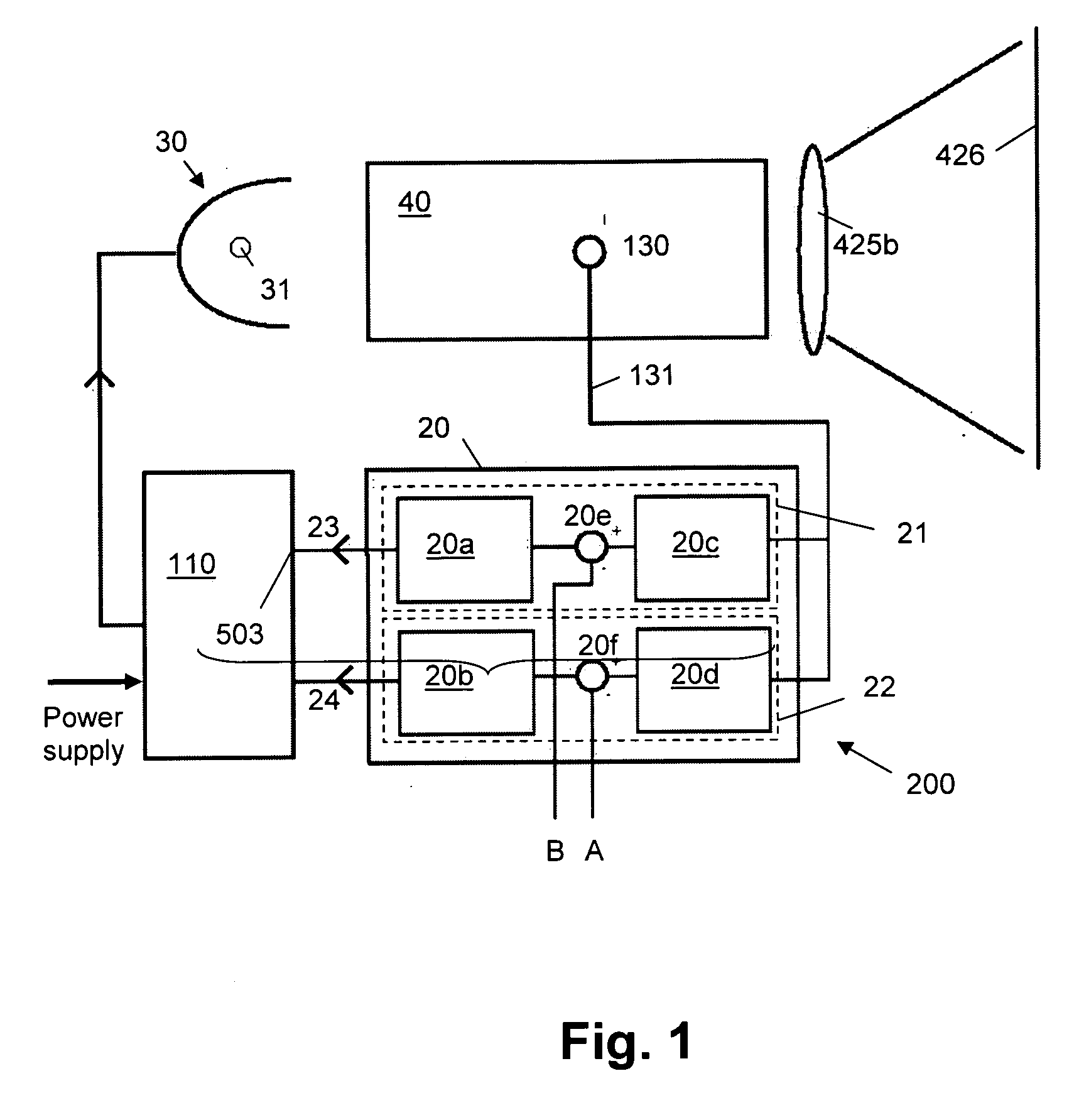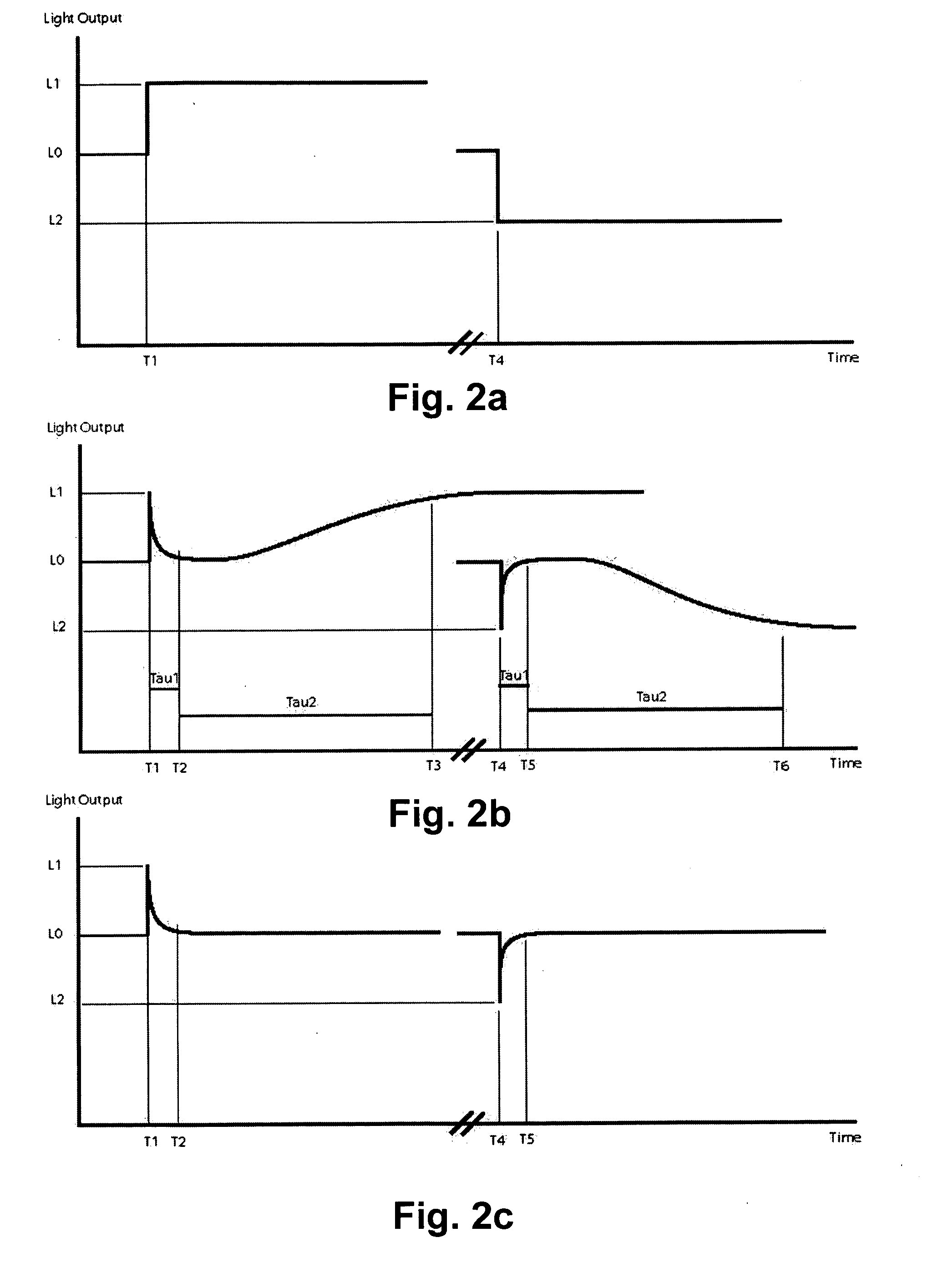Projector lamp control for increased lamp life
- Summary
- Abstract
- Description
- Claims
- Application Information
AI Technical Summary
Benefits of technology
Problems solved by technology
Method used
Image
Examples
first embodiment
[0051] When the lamp-reflector assembly 30 and / or the illumination and modulation system 40 introduces a random disturbance, this will be detected by the light sensor 130, which generates a corresponding electrical signal 131. Through the high pass filter of the controller 20 this signal is returned to a processing means such as e.g. a differential amplifier, comparing this signal with a reference signal. The output of the controller 20 controls the lamp power supply 110 in order to achieve a constant light-flux on light sensor 130. The controlled light output in function of time, which is obtained with a system according to the present invention, is illustrated in FIG. 2b.
[0052] As can be appreciated from FIG. 1, according to an embodiment of the present invention, in fact two compensation loops may be provided in the lamp control system 200: a fast compensation loop and a slow compensation loop.
[0053] The fast compensation AC coupled loop is provided in the lamp control system 2...
second embodiment
[0076] According to the present invention, a multi-channel system is provided. An illustrative example of such multi-channel system is illustrated in FIG. 5. In a multi-channel system, a plurality of DC lamps are provided for illuminating different areas.
[0077] In a multi-channel projector system it is desirable to have all the projection devices in this system at the same output luminance level. This means the light-output of each projection device is equal if the illuminated area and the screen characteristics of all projection devices are identical. With a suitable communication system between the individual projection devices, the information of the light output levels can be exchanged between the projection device and adjusted to an equal luminance level.
[0078]FIG. 5 schematically shows an example of a multi-channel system with two channels A and B, however, this can be extended to any m×n configuration of illumination devices, e.g. projection devices such as rear and / or front...
PUM
 Login to View More
Login to View More Abstract
Description
Claims
Application Information
 Login to View More
Login to View More - R&D
- Intellectual Property
- Life Sciences
- Materials
- Tech Scout
- Unparalleled Data Quality
- Higher Quality Content
- 60% Fewer Hallucinations
Browse by: Latest US Patents, China's latest patents, Technical Efficacy Thesaurus, Application Domain, Technology Topic, Popular Technical Reports.
© 2025 PatSnap. All rights reserved.Legal|Privacy policy|Modern Slavery Act Transparency Statement|Sitemap|About US| Contact US: help@patsnap.com



